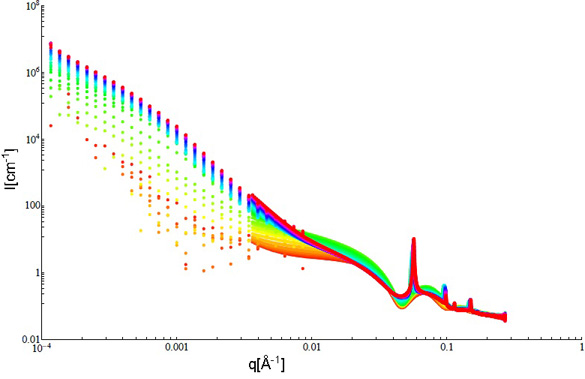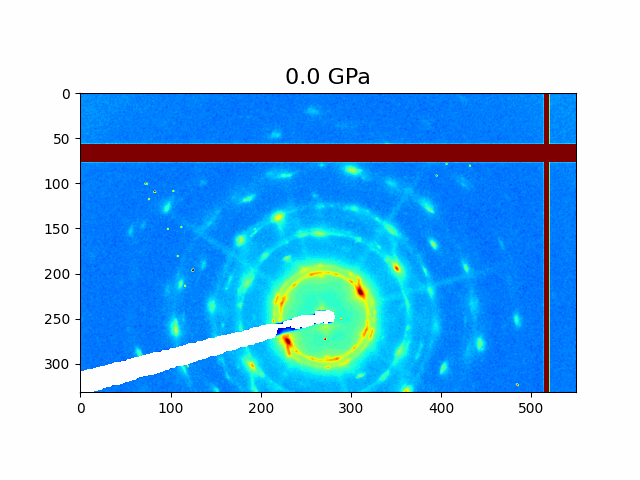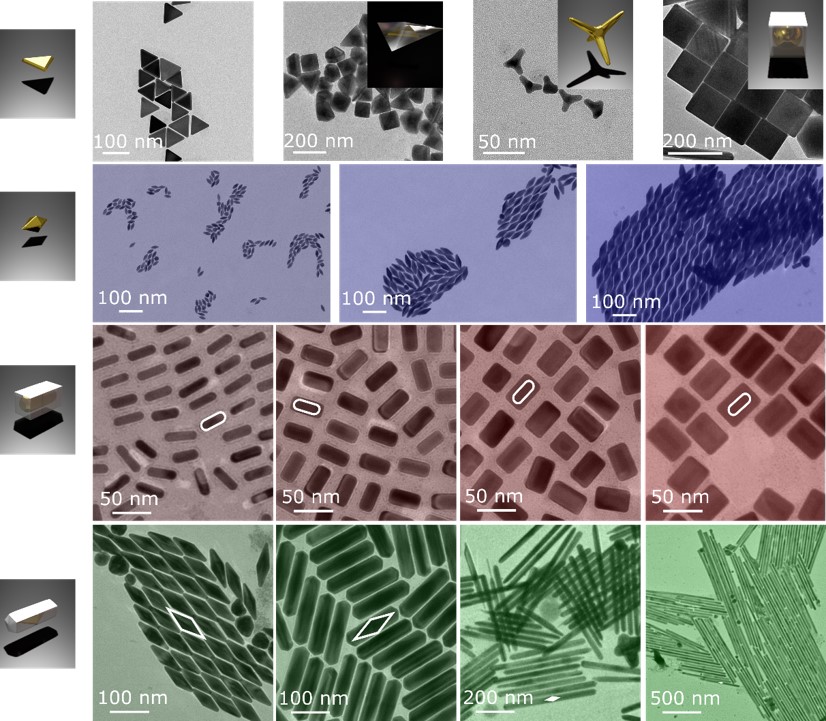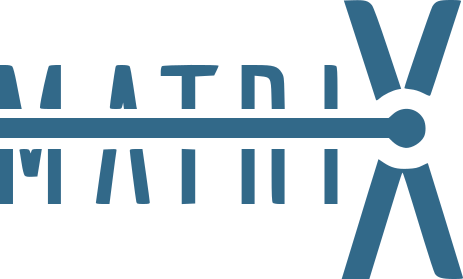Principal interests
We study the formation of nano-structure materials using various soft matter systems such as liquid crystals, colloidal suspensions of nanoparticles or emulsions. Taking advantage of self-assembly in solution, we obtain periodic materials, with a long-range order similar to that of atomic and molecular crystals, but over length scales ranging from a few nanometers to one micron. These materials hold promise for new physical (most notably optical) properties, which can be easily modulated by fine-tuning the type of structure formed during self-assembly.
The crystallographic study of these materials is done using small angle X-ray (SAXS) or neutron (SANS) scattering.

Members
Permanent members
- Pierre-Antoine Albouy
- Cyrille Hamon
- Marianne Impéror-Clerc
- Brigitte Pansu
Postdocs & PhD
- Jieli Lyu (PhD)
- Wajdi Chaabani (Postdoc)
- Helen Ibrahim (Postdoc)
Former team members
Research thematics
Silica-based mesoporous materials
Mesoporous materials, obtained by the calcination of precursor mixtures of surfactant and silica have raised considerable interest over the last two decades due to their potential applications in areas ranging from catalysis to filtering and to controlled drug delivery. We studied in detail their formation mechanism using time-resolved in situ SAXS, at third generation synchrotron facilities (ESRF, SOLEIL). This information will be useful in optimizing the elaboration of these mesoporous materials, in designing original systems and in loading them with particles of various natures.

The functionalisation of silica-based mesoporous materials by the insertion of nanoparticles (NPs) in the pores is a very active area of research. The NPs are usually synthesized directly inside the porous material, yielding e.g. metal nanowires. Using such post-synthesis methods it is however difficult to control the morphology of the NPs, a parameter highly relevant to the applications that can require, for instance, specific plasmon properties.
We will explore a new synthesis pathway, whereby the NPs will be incorporated during the self-assembly step. Gold NPs with the desired morphology (i.e. controlled size and anisotropy) will be stabilized in aqueous solutions of surfactant micelles, and the silica precursor will be added in a second step. Thus, the hybrid material will contain a controlled amount of gold NPs with well-chosen properties. The assembly kinetics will be studied by in situ SAXS measurements, as in Figure 2, and the position of the NPs will be monitored over time.

Supracrystals of metal nanoparticles
Metal nanoparticles are used for numerous applications, in various fields. The control of their interaction is a very active research topic, aiming to facilitate their manipulation, to concentrate them and even to induce their self-assembly. To this end, exchanging the ligands that cover the NPs is a widely employed strategy. Metal NPs grafted with hydrophobic ligands self-assemble spontaneously and form supracrystals (SC), which should exhibit original physical properties. In an NP suspension, supracrystals appear either in the bulk or at the air-solvent interface, for a sufficiently high volume fraction.
The local structure is determined by SAXS, a technique particularly well adapted to monitoring the nucleation/growth process from various mixtures of volatile and non-volatile solvents (see video 1) [1] but also to follow the stability of SC under hydrostatic pressure (video 2). By emulsification, the same NP suspensions can be dispersed in water as droplets, and the nucleation/growth process takes place in a confined medium. NP supra-crystallisation is thus a unique phenomenon that mimics the liquid-solid transition at the nanoscale, but which exhibits a rich range of behavior.

Video 2. High Pressure SAXS (HP-SAXS) on 3D face-centered cubic (FCC) supracrystals (SC) built by spherical gold nanoparticles (NPs) performed at Swing (Soleil synchrotron). Dodecane-thiol ligands are grafted at the gold surface and assure the stability of the gold NPs by forming a protective soft layer. Under a hydrostatic pressure, the supracrystals, and mainly, the soft matrix, is compressed: the cubic cell parameter continously decreases as revealed by SAXS. Up to 12 GPa, the SC shows a high structural stability. The bulk elastic modulus of the SCs and of the soft matrix can be derived from the HP-SAXS measurements. Credits: Helen Ibrahim, Victor Balédent, Marianne Impéror-Clerc and Brigitte Pansu
Optical properties of nanoparticles
The strong optical properties of nanoparticles (e.g. plasmonic or semiconducting) can be tuned across the visible to the mid infra-red range by modifying their size and shape (Figure 3). When such nanoparticles are organized in ensembles, collective properties are obtained that differ from those of individual particles and the resulting optical properties can be further tuned and even amplified. In particular, plasmon coupling in small gaps (1–10 nm) between plasmonic nanoparticles results in intense electric fields (i.e.,hot-spots) that can be exploited for many purposes, such as sensing, biomaterials, metamaterials design, switching devices, and so forth.

References
[1] D. García‐Lojo, E. Modin, S. Gómez‐Graña, M. Impéror‐Clerc, A. Chuvilin, I. Pastoriza‐Santos, J. Pérez‐Juste, D. Constantin and C. Hamon, Adv. Funct. Mater., 2021, 31, 2101869
